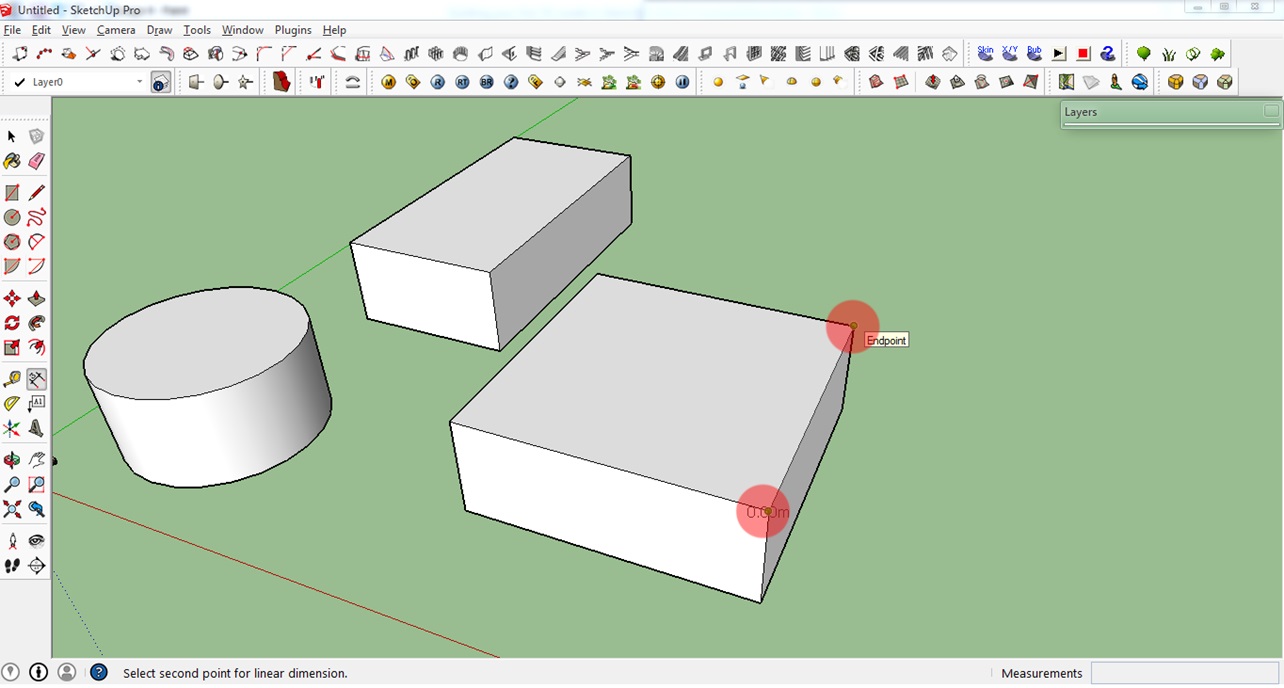

The From Edges checkbox controls whether edges that are not associated with a face cast a shadow.When the On Ground checkbox is selected, your geometry can cast shadows on the ground plane.This feature gobbles up your graphics card’s processing power, so you might try deselecting this option if you want to display shadows but the feature is causing a performance problem. The On Faces checkbox enables faces to cast shadows on other faces.When the Use Sun for Shading checkbox is selected, SketchUp’s simulated sun shades parts of your model even if shadows are toggled off.With this option, you can lighten or darken areas under shade or shadows. The Dark slider controls the shadow’s intensity.This option effectively lightens and darkens illuminated surfaces. The Light slider controls the light’s intensity.If your model is geolocated, this time zone should be accurate, but you can check that it’s correct or change it if you like.

(Most likely Graphic Property might be the reason. In View -> Lighting check whether single light source is checked. You might have applied material or default materiel property might be tweaked. The Time Zone drop-down list enables you to choose a new time zone. There are different possibilities for this.The Display Shadows button in the upper left toggles the shadow display on and off.(bottom).īeyond the basic shadow settings outlined in the preceding steps list, you can customize a few more shadow attributes in the Shadow Settings dialog box: In the following figure, you see the how the shadows change from 7:00 a.m. To select a month and day, drag the Date slider or enter a date in the Date box.To select the time of day, drag the Time slider along the timeline or enter a time in the Time box.(Alternately, you can display the Shadows toolbar Customizing Your Workspace explains how to show and hide toolbars.) Select Window > Shadows to open the Shadow Settings dialog box Open the Shadows panel in the Default Tray, where you can control how the shadows appear.This should give you a sense of pushing and pulling a real-life building. To turn on shadows and see shadows at different times of day, follow these steps: Lumion Live Sync allows you to establish a live connection which means you can model and render simultaneously. The team I work with will design the building and create a SketchUp model. After you model is geolocated, SketchUp knows (roughly) how the sun will shine on your model.īy default, shadows are turned off, because they can use a lot of your computer’s processing ability. Change the background color of the scene or disable the use of image-based.
#Sketchup 17 how to shade pices of a model manual
Or to add a location manually in any version of SketchUp, select Window > Model Info, select the Geo-location option in the sidebar on the left, click Set Manual Location, and enter a latitude and longitude in the dialog box that appears.
#Sketchup 17 how to shade pices of a model pro
To geolocate your model in SketchUp Pro 2017, you can import terrain using the Add Location tool. Tip: Before you can cast real-world shadows in a model, your model must be geolocated.


 0 kommentar(er)
0 kommentar(er)
